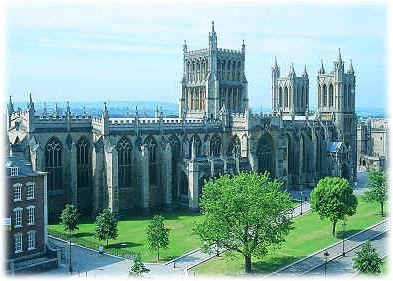Bristol, St Augustine’s, exterior (1298-, 1320s – 1340s)
Bristol cathedral
A church has probably stood on this site for over a thousand years. About 1140 Robert Fitzhardinge founded the Abbey of St. Augustine. The Chapter House and Abbey Gatehouse remain clearly to be seen: the rest is mostly occupied by Bristol Cathedral School. The eastern end of the Cathedral, especially the Choir, gives Bristol Cathedral a unique place in the development of British and European architecture. The Nave, Choir and Aisles are all of the same height, making a large hall. Bristol Cathedral is the major example of a ‘hall church’ in Great Britain and one of the finest anywhere in the world. In 1539 the Abbey was closed and the incomplete nave was demolished. The building was turned into the Cathedral Church of the Holy and Undivided Trinity in 1542. In 1868 plans were drawn up to complete the Nave to its medieval design. The architect, G.E. Street, found the original pillar bases, so that the Cathedral is much as it would have been when it was still the abbey church. J.L. Pearson added the two towers at the West End and further reordered the interior.

